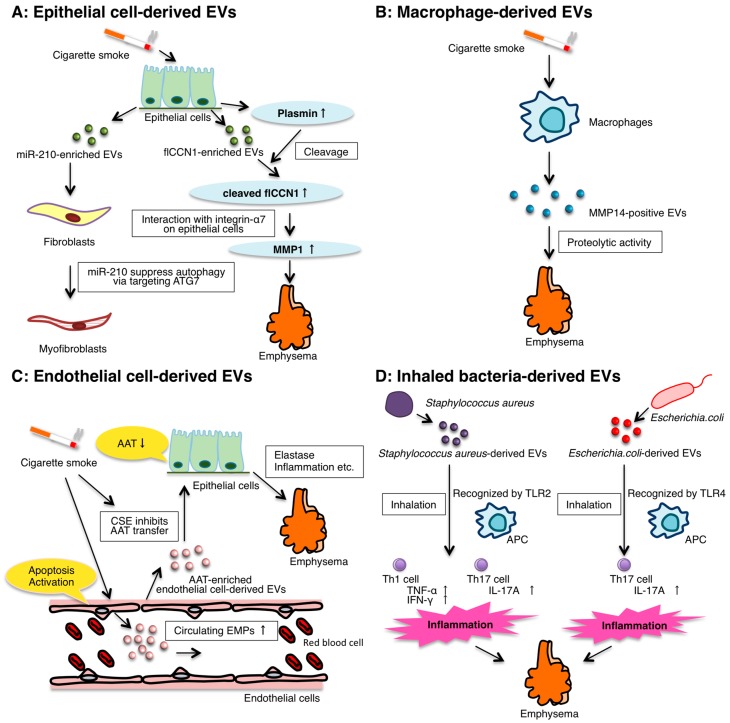Figure 1.
Summary of the reported functions of EVs in COPD. EVs are released from almost all cell types in the lung. EVs play a key cell-to-cell communicator role in the lung microenvironment. The following are the roles of the EVs released from different cell types in COPD pathogenesis. (A) Epithelial cell-derived EVs: CSE-induced human BEC-derived EV miR-210 promotes myofibroblast differentiation. Cleaved CCN1, a truncated form of full-length CCN1 in EVs by CSE, activates the secretion of MMP-1, which promotes the emphysematous changes; (B) Macrophage-derived EVs: CSE induces the release of macrophage-derived EVs with proteolytic activities attributed to MMP14; (C) Endothelial cell-derived EVs: the number of circulating EMPs increases in COPD patients and smokers. CSE inhibits AAT transport into epithelial cells via endothelial cell-derived EVs action; (D) Inhaled bacteria-derived EVs: Staphylococcus aureus-derived EVs induce Th1 and Th17 neutrophilic pulmonary inflammation. Repeated exposure to Escherichia coli-derived EVs induces neutrophilic inflammation, leading to emphysema. AAT, α1-antitrypsin; APC: antigen presenting cell; CCN1, CYR61/CTGF/NOV family 1; CSE, cigarette smoke extract; EMPs, endothelial microparticles; EVs, extracellular vesicles; microRNA, miR; MMP, metalloproteinase protein.

